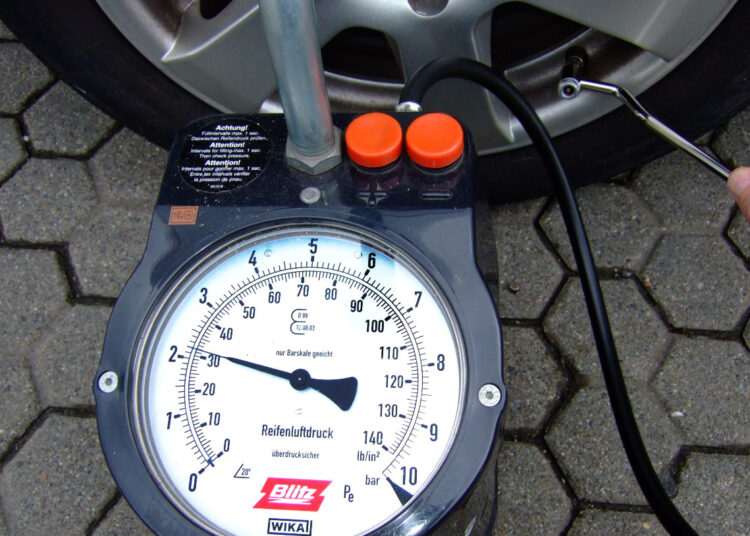A fortnight ago, I was driving along the 6th Avenue in Gwarinpa, Abuja in the Federal Capital Territory (FCT) when suddenly I had the urge to give myself a little treat. I was torn between a hot fisherman soup and wheat or shawarma at my favourite shawarma spot on the same 6th Avenue. I settled for the latter.
While I was waiting for my order, I spotted a man who should be in his late thirties or early forties in a black 2015 Mercedes Benz GLK. Besides him in the front passenger seat, was a five- or six-year-old girl. A few minutes later, a young lady I assumed was the mother joined them and to my surprise, instead of putting the baby in the back seat, she squeezed herself beside the baby while the man started the car to drive off.
The unsafe scene attracted me and I quickly walked up to the man and advised him to please put the little baby at the back and properly strap her. He did as I advised and then with a smile, drove off.
For some time, I have bored you with why and how to transport your loved child by using the car seat. I know I may not be the most qualified to dictate to you how to treat your kids whom you profess to love so much.
All I am asking you to do is to have a rethink on why you choose to strap yourself while driving while little children who deserve more care are exposed to multiple risks caused by us.
We are the ones who indulge in speeding, drinking, phoning and driving against traffic, making wrong turns among other risky driving behaviours even when these innocent children are entrapped.
Since the Federal Road Safety Corps flagged off its 2024 Ember Months’ Campaign, the corps has embarked on road shows on some major roads. I was excited to hear friends talk about the event in Jos, the Plateau State Capital.
In the course of the road shows, it was shocking to find some big boys and girls who felt too big and unapproachable when flyers were given to them. In the midst of this, however, was a lovely mother who took time to properly strap her baby in a car seat. There were others, although very few.
Today, however, is not about child safety. It is about tyres again, courtesy of a new friend. Although I have written severally on tyres, please kindly indulge me as I share this material from one of my friends named, Chibuzor Awah, who feels concern about the level of ignorance on tyre care.
Chibuzor is following the footsteps of Sab Ucheagwu. I do hope you will find the material useful. A recent study according to the report sent in by my friend found out that 70 percent of the vehicles surveyed had a tyre with an inflation problem while 23 percent of vehicles had at least one tyre under inflated by more than 20 percent; this will increase fuel consumption, reduce tyre life and increase greenhouse gas emissions
The report also indicates that 17 percent of the vehicles had at least one tyre over inflated by more than 20 percent; this will cause excessive tyre wear and reduce vehicle handling. Thirty-six percent of the drivers did not know how to properly measure tyre pressure. Fifty-three percent of drivers said they checked their tyre pressure when the tyres ‘looked low (but tyres may be significantly under inflated by the time you notice a difference with a visual check).
Only 16 percent of the drivers could identify the vehicle placard as the correct place to find the proper inflation for their tyres (84 percent did not know where to find it)
The report notes that under inflation is the number one enemy of a tyre. Operating an under inflated tyre – or even an overloaded tyre – at highway speed on a warm sunny day is a recipe for tyre failure. It lists the benefits of properly inflated and maintained tyres to include reduced fuel consumption cost savings on fuel, extended tyre life, better vehicle handling and improved safety. Others are prevention of avoidable breakdowns and collision as well as reduced exhaust emissions that contribute to climate change
You cannot tell if your tyres are under inflated or over inflated by just looking at them. Tyre pressure should be measured with a good quality air pressure gauge at least once in a month. Pressure should be measured when the tyres are cold, this means when the vehicle has been stationary for at least three hours or has not been driven for more than two kilometres.
The maximum tyre pressure marked on the tyre sidewalls refers to the pressure required to carry the maximum load of the tyre. It is generally not the same as the manufacturer’s recommended tyre pressure for that particular vehicle.
Most people are not able to locate, or do not even know about their vehicle’s information placard. And yet this small sticker contains key information about the vehicle, including the correct tyre pressure for the front and rear tyres.
In most vehicles, the owner’s manual will direct you to the vehicle information placards location. Manufacturers locate them in many different places. Some of the most common places to look for the vehicle information placard is the vehicle information placard.
Others are the driver’s side front door, driver side rear door, driver side “b’’ pillar (post closest to door hinge), passenger side “b’’ pillar, passenger side front door, passenger side back door, driver side “c’’ pillar (post closest to the door handle), passenger side “c” pillar, fuel filler door, trunk/hatch area, glove box, center console, sun visor.
Over inflation can be a problem too; an over inflated tyre rides on just the centre portion of the tread. This smaller contact area means reduced grip on the road, leading to a harsh ride as well as handling issues (such as steering and stopping problems) and increased wear on tyres and suspension components.
So, what are the ways to properly maintain your tyre measurement? Tyre pressure should be measured with a good quality air pressure gauge at least once in a month. You should also conduct a visual inspection regularly for damage and signs of excessive or uneven wear.
Let’s talk about wheel alignment. It is a good idea to have your wheel alignment checked once every six months. Symptoms of poor alignment are that the steering pulls to one side or there is excessive wear on the inside or outside edges of the tyre. If you are driving on straight and level ground and slowly release the steering wheel, your vehicle should continue to travel straight ahead. If it pulls to one side, its alignment could need adjustment.
On wheel balancing, I will tell you that wheels should also be balanced; a vibration felt in the steering wheel suggests that the front wheel is out of balance (has an imbalance). On the other hand, a vibration felt in the driver’s seat usually means the rear wheel is out of balance (has an imbalance).
On tyre rotation, the key lesson is to rotate your tyres according to the vehicle manufacturers’ recommendation found in the owner’s manual. Common practice is to rotate tyres about every 10,000km.




